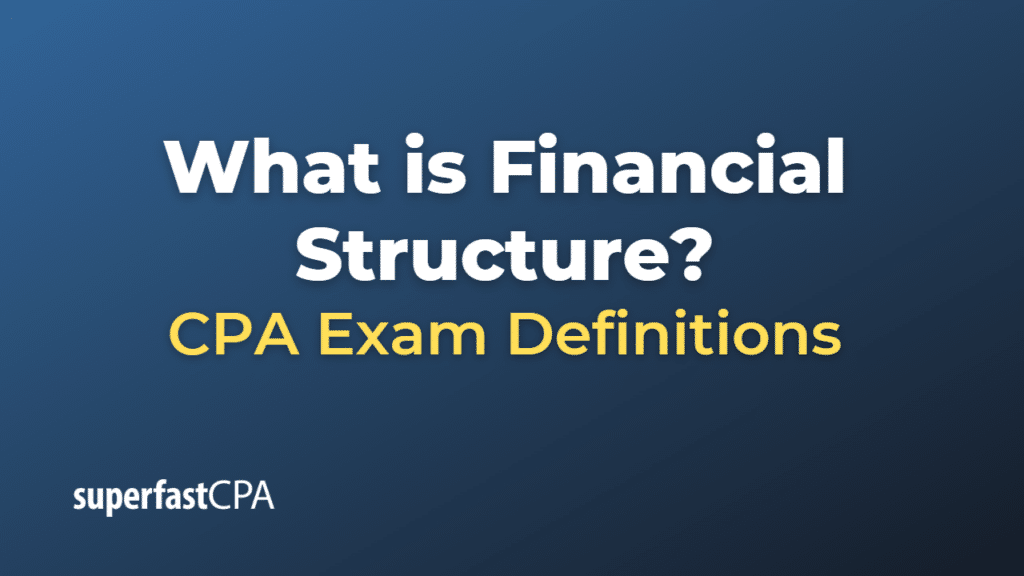Financial Structure
Financial structure refers to the specific mixture of long-term debt and equity that a company uses to finance its operations and growth. It’s a snapshot of a company’s liabilities and equity and forms part of its overall capital structure. This financial structure is a way for a company to fund its business activities, buy assets, and sustain growth.
Let’s break it down:
- Debt: Debt includes loans, bonds, or any other form of borrowing that the company must repay over time, usually with interest. The use of debt can be beneficial because interest expenses are tax-deductible. However, excessive debt can result in financial distress and bankruptcy risk if the company fails to meet its payment obligations.
- Equity: Equity financing involves selling shares of stock or ownership in the company to raise money. The benefit of equity financing is that, unlike debt, it does not have to be repaid. However, equity financing dilutes ownership and control over the company.
The composition of a company’s financial structure can significantly impact its profitability and risk profile. The optimal financial structure may differ between companies and industries and may change over time depending on business conditions and strategy.
For example, a company with high debt levels may have higher financial risk but also potentially higher returns for equity holders because debt is a cheaper form of financing due to its tax advantages. Conversely, a company with a higher equity proportion in its financial structure may have lower financial risk but also potentially lower returns for equity holders because equity is a more expensive form of financing.
In analyzing a company’s financial structure, financial analysts often use ratios such as the debt-to-equity ratio, equity ratio, debt ratio, and others to gauge financial stability and compare it with others in the industry.
Example of Financial Structure
Let’s take an example of two fictional companies: TechCorp and ManufactureInc. Both companies have a total of $1 million in assets.
TechCorp: TechCorp is a technology company with a more aggressive growth strategy. TechCorp has funded its business with $700,000 in debt (like loans or bonds) and $300,000 in equity (like selling stock). The company’s debt-to-equity ratio would be 700,000/300,000 = 2.33. This high ratio implies that TechCorp is using a high amount of debt to finance its assets compared to its equity, which could signify high financial risk.
ManufactureInc: ManufactureInc is a manufacturing company with a more conservative financial approach. It has funded its business with $200,000 in debt and $800,000 in equity. The company’s debt-to-equity ratio would be 200,000/800,000 = 0.25. This low ratio implies that ManufactureInc is using more equity to finance its assets compared to its debt, indicating lower financial risk compared to TechCorp.
These examples illustrate how the financial structure differs based on the industry and the company’s strategy. TechCorp, being in the technology sector, might have opted for a higher debt structure, expecting high growth and profits in the future to cover its debts. On the other hand, ManufactureInc, being in the manufacturing sector, might have opted for a lower risk financial structure with higher equity, considering the steady but slower growth in its sector.
Remember, a company’s financial structure is crucial as it can impact its risk profile, profitability, and ultimately, the company’s valuation. Also, while high debt can be risky, it’s not necessarily bad if the company can efficiently use the debt to generate high returns.













